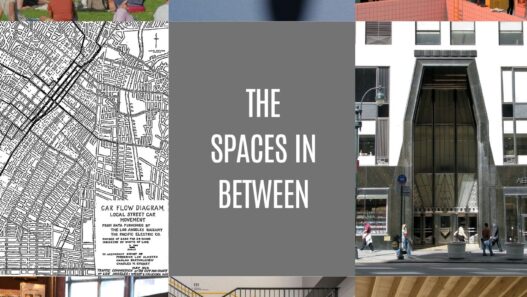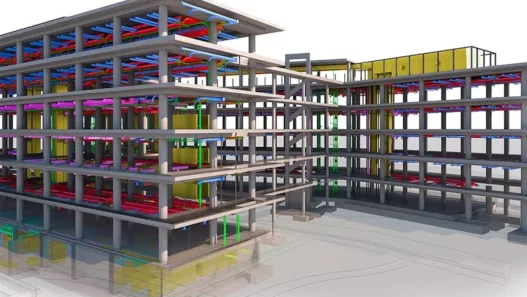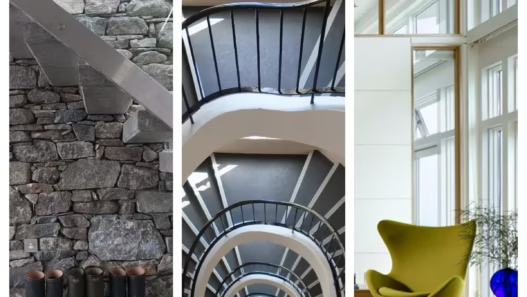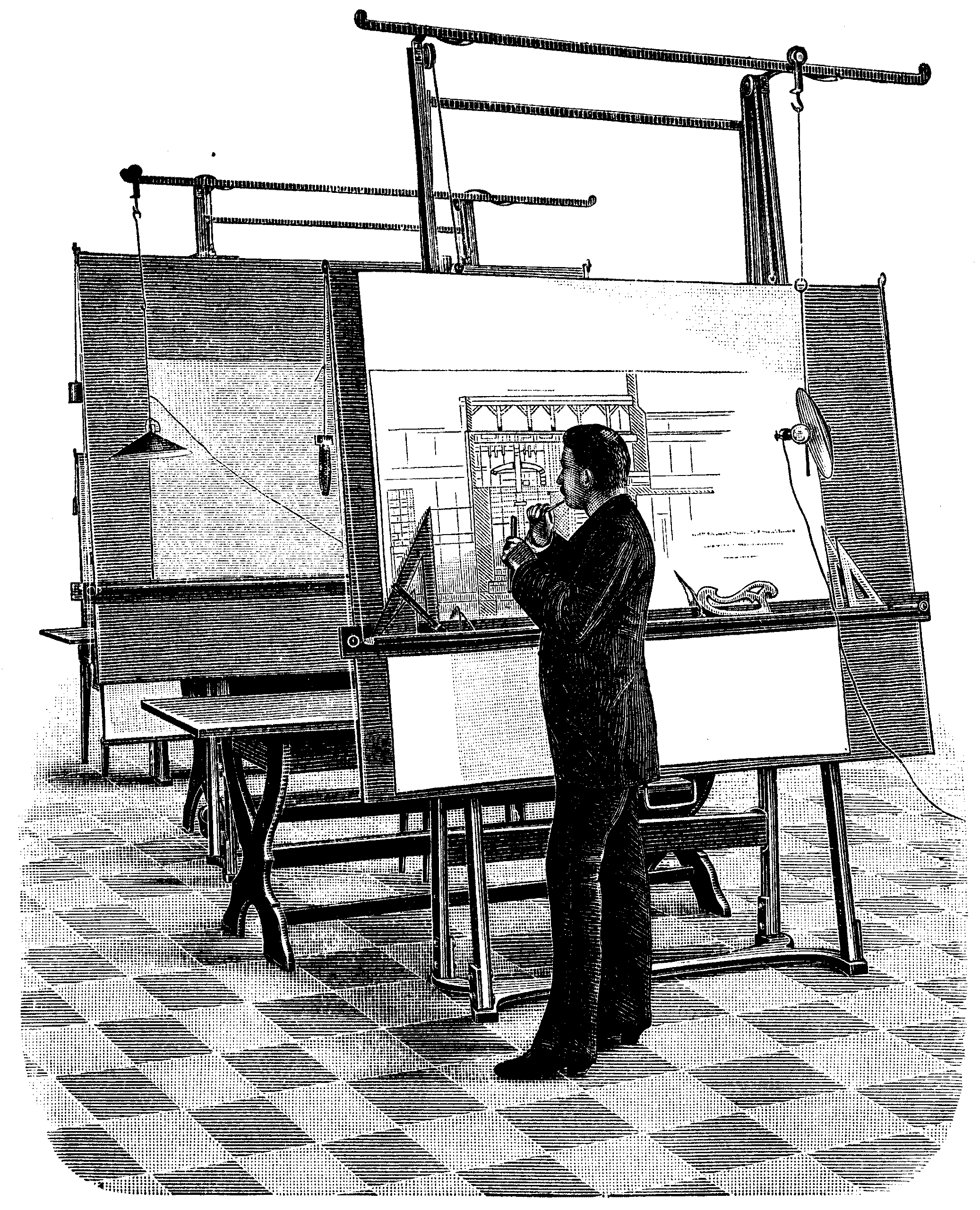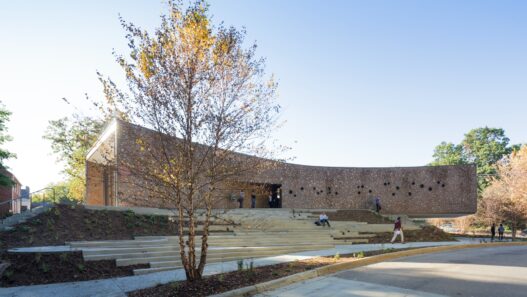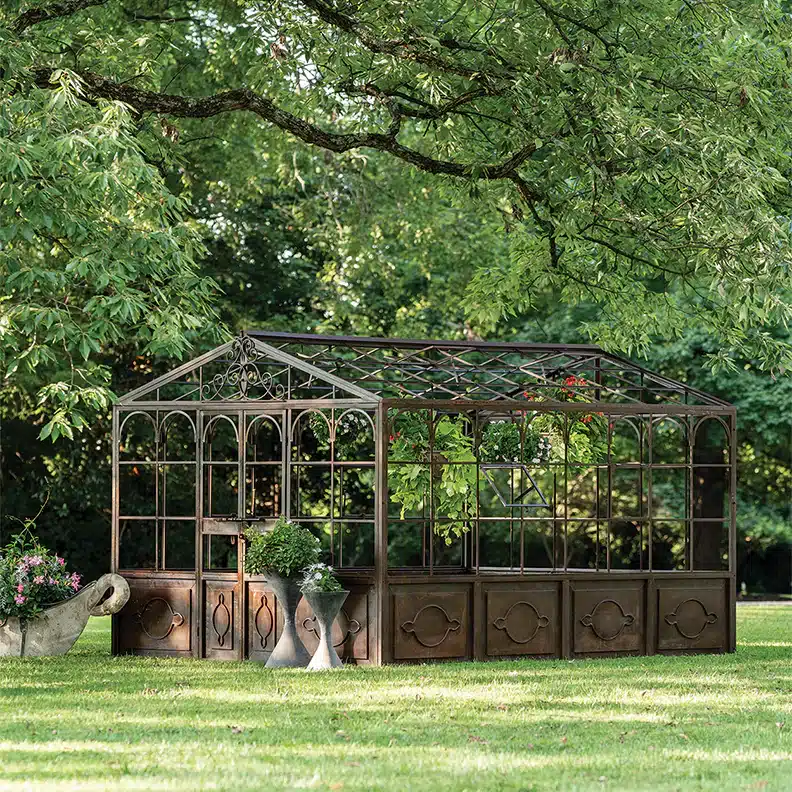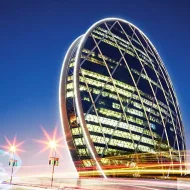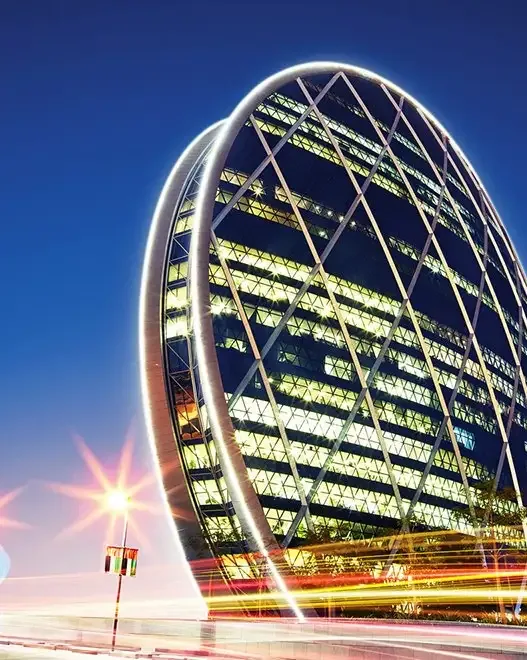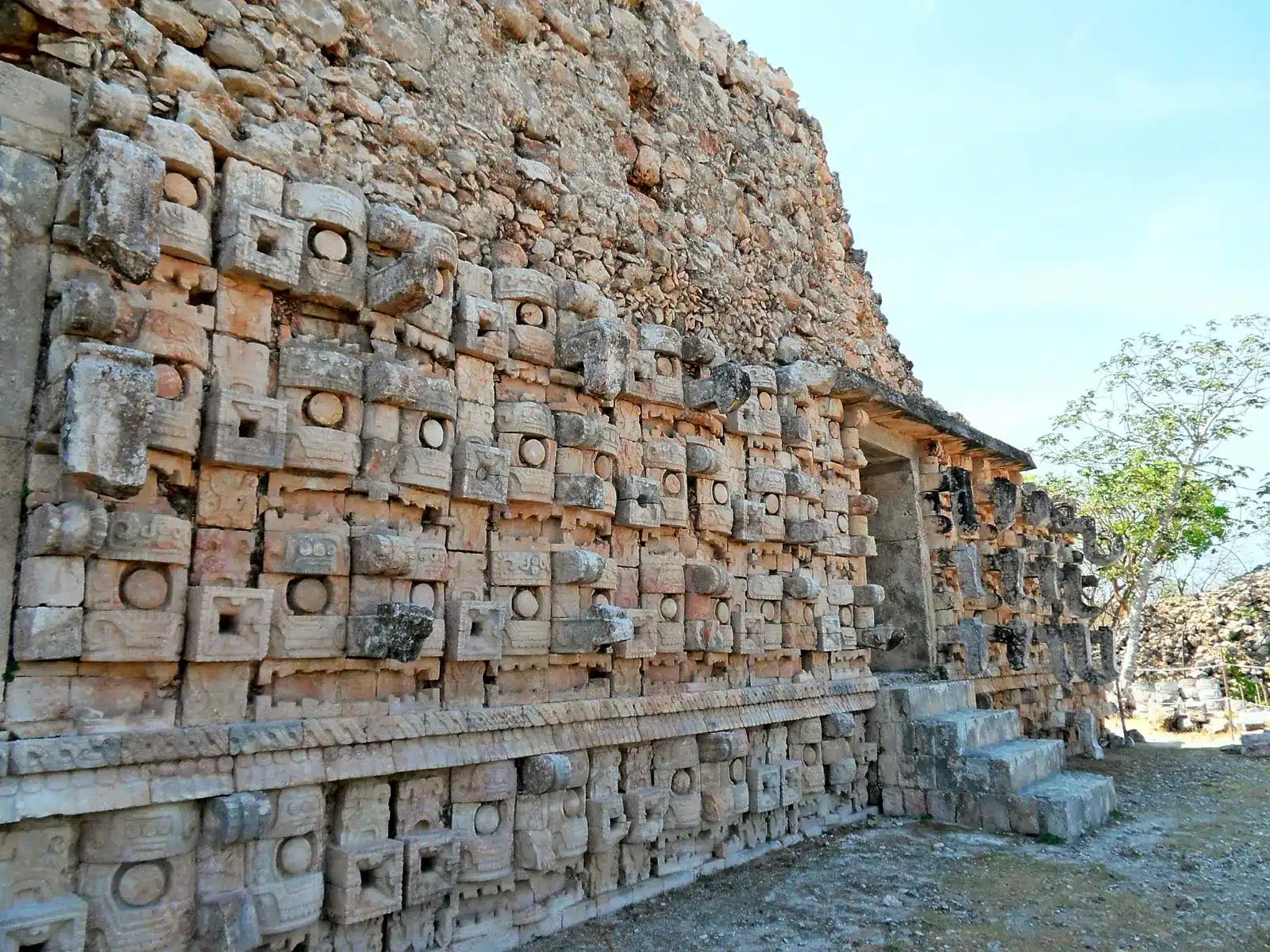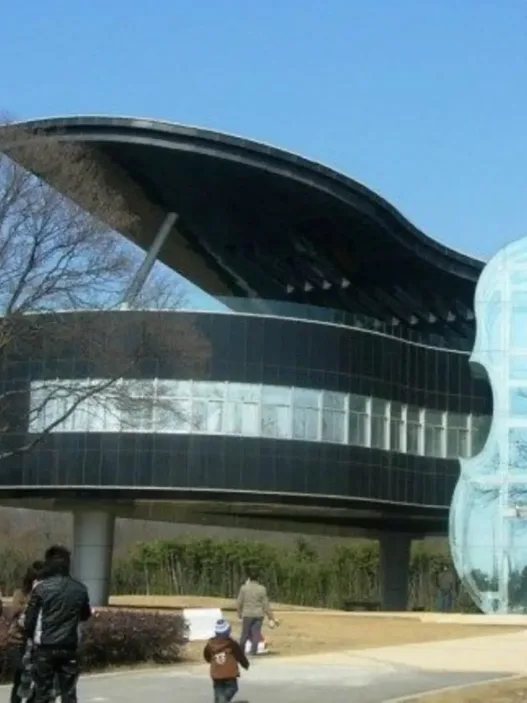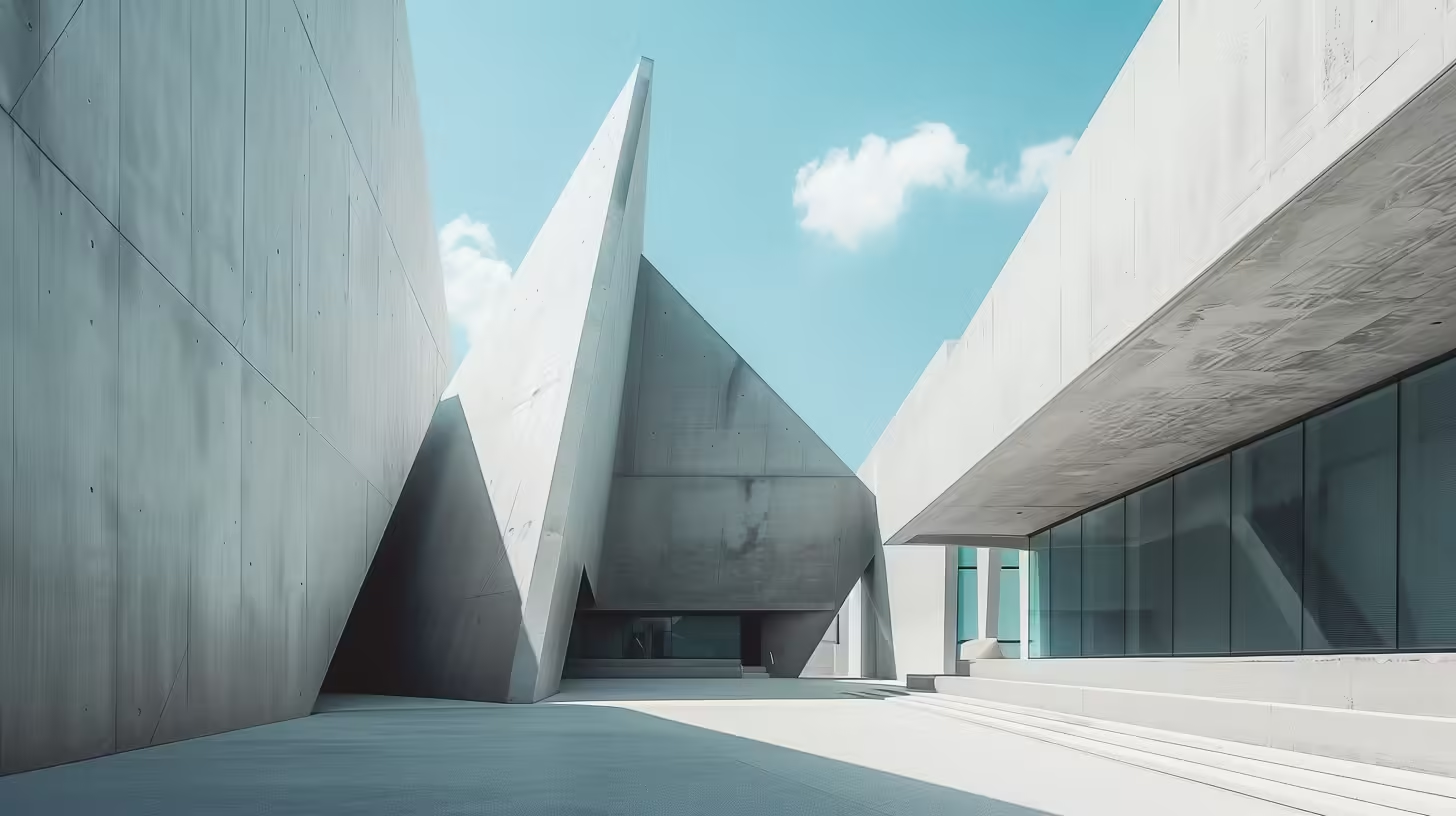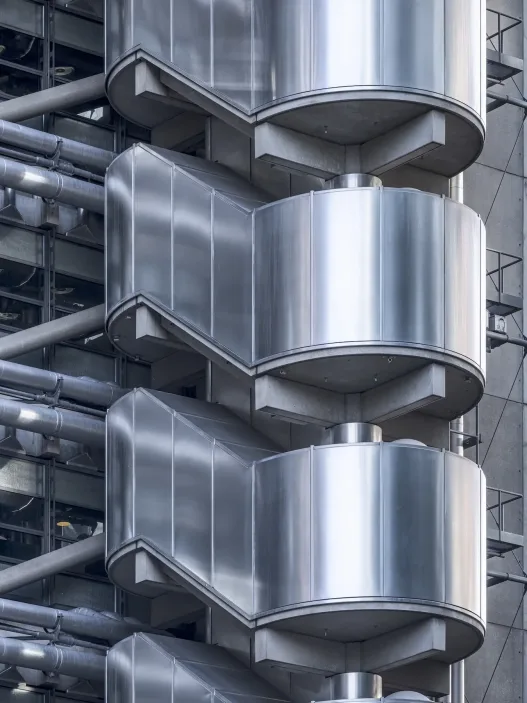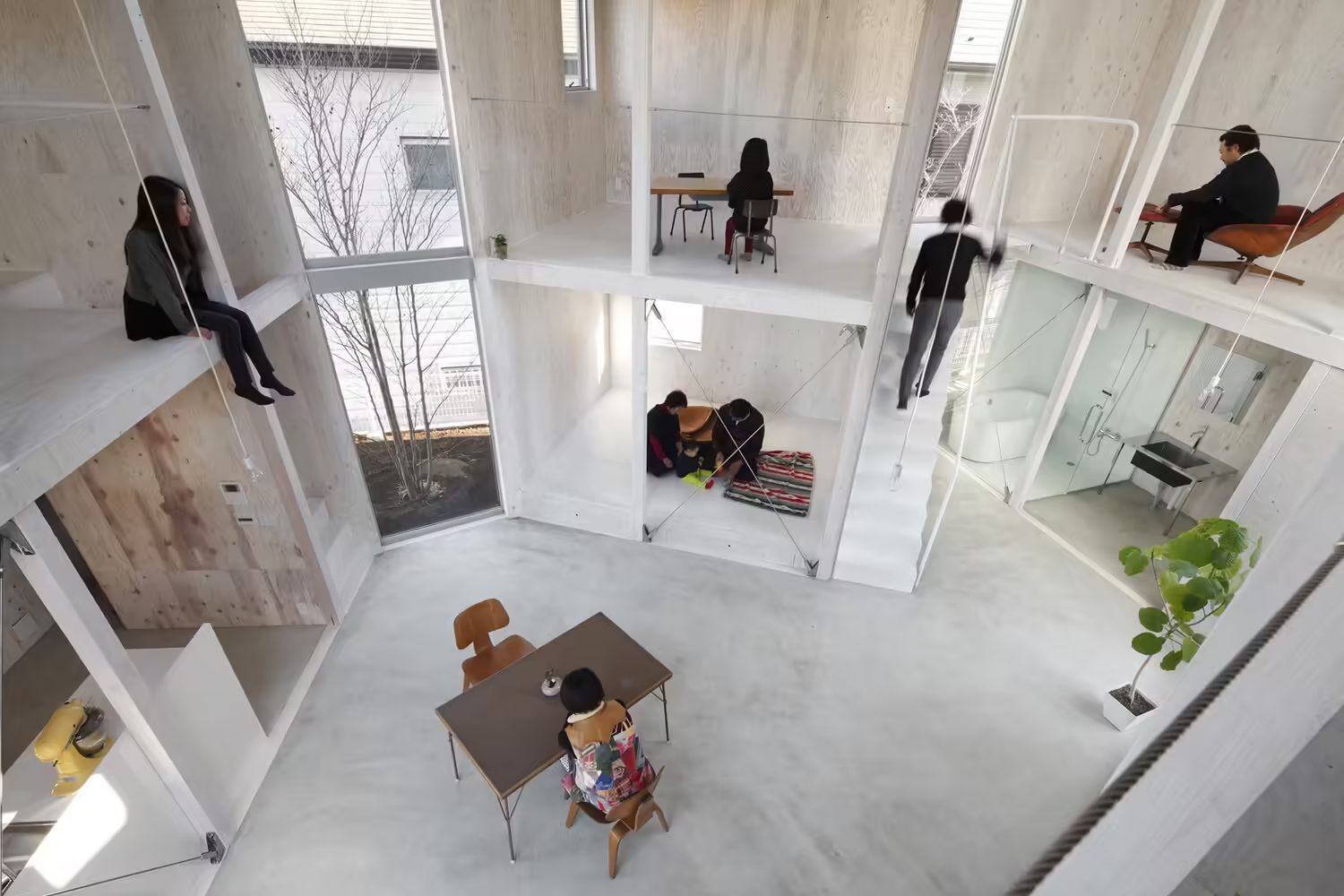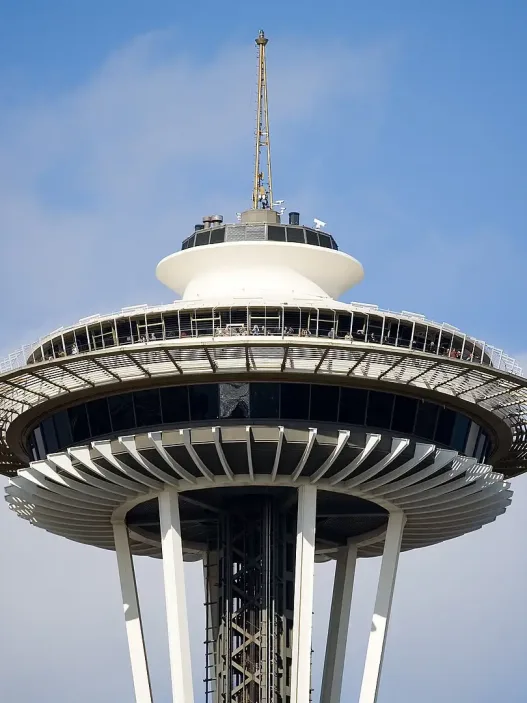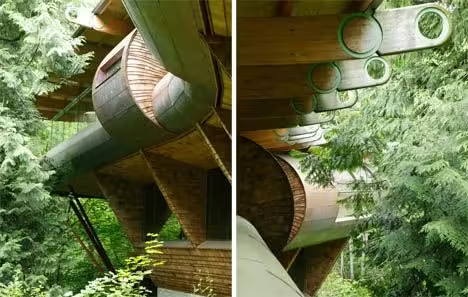Victorian greenhouses stand as remarkable symbols of 19th-century innovation and design. They not only reflect the architectural trends of the period, but also embody the profound shifts in society, technology and environmental consciousness that characterized the Victorian era. The interplay of these elements gives us a deep appreciation of how greenhouses evolved into the fascinating spaces we admire today.

Impact of the Industrial Revolution
The Industrial Revolution of the late 18th and 19th centuries fundamentally changed many aspects of life, including architecture. This period marked the transition from agricultural to industrial economies, leading to urbanization and a burgeoning middle class. With the rise of factories and new technologies, demand for fresh produce and exotic plants increased. Greenhouses became vital for growing plants year-round, meeting both culinary needs and a growing interest in botany.
The advent of steam power and advanced means of transportation, such as railways, allowed for the rapid transportation of goods, including plants. This accessibility encouraged a fascination with gardening and horticulture that extended beyond the wealthy elite to the middle class. As cities have grown, green spaces have become indispensable and greenhouses have served as a bridge between nature and urban life, offering a green refuge in increasingly industrialized environments.
Evolution of Greenhouse Design
The design of greenhouses developed significantly during the Victorian era, influenced by advances in engineering and materials. Early greenhouses were often primitive and inefficient, but the introduction of iron and glass revolutionized the construction of greenhouses. The iconic Victorian greenhouse typically featured large glass panes supported by intricate iron frames, providing maximum sunlight and ventilation.
Architects and gardeners collaborated to create aesthetically pleasing designs that complemented the surrounding landscapes. These greenhouses often featured graceful arches, elaborate roof structures and decorative elements that showcased the period’s passion for ornamentation. The Crystal Palace, built for the Great Exhibition, was an example of this evolution. Its large glass and iron structure symbolized progress and innovation, inspiring countless greenhouse designs.
Key Figures of Victorian Architecture
Many influential figures played important roles in the development of Victorian greenhouses. One of the most important was landscape gardener and architect Joseph Paxton, who designed the Crystal Palace. His innovative use of prefabricated elements and modular construction techniques set a precedent for future greenhouse designs. Paxton’s work showed how functionality could marry beauty and his designs influenced a generation of architects and gardeners.
Another important figure was Sir John Soane, known for his unique approach to light and space. His architectural philosophy emphasized the importance of natural light, a principle that resonated in greenhouse design. Soane’s influence encouraged architects to create the airy, light-filled spaces necessary for plants to grow and people to enjoy.
Cultural Importance of Greenhouses
Victorian greenhouses were more than functional spaces; they had cultural significance as symbols of status and sophistication. Wealthy families often displayed their greenhouses as part of their estates, showcasing exotic plants and flowers that symbolized travel and global connections. The act of cultivating rare plants became a kind of social currency, with horticultural clubs and societies springing up to celebrate horticultural achievements.
Moreover, greenhouses served as recreational and educational spaces. Families gathered in these tranquil settings, enjoying tea among the greenery while children learned about botany and the natural world. This blending of education and recreation has fostered a deeper appreciation for nature, which is especially important as industrialization transforms landscapes and lifestyles.
Innovations in Materials and Technology
The Victorian era was marked by groundbreaking innovations in materials and technology that reshaped greenhouse construction. The introduction of plate glass allowed the use of larger panes, increasing light transmission and improving the aesthetics of these structures. In addition, advances in iron production enabled the creation of more complex and durable frames.
The use of cast iron became widespread, allowing for elaborate designs that were both functional and visually striking. Innovations in heating systems, such as hot water and steam heating, transformed greenhouses into controlled environments, allowing the cultivation of plants that did not grow in the local climate. As a result, these technological advances not only increased the efficiency of greenhouses, but also the variety of plants that could be grown, making them indispensable in horticulture.
In sum, the historical context of Victorian greenhouses is a tapestry of social, technological and cultural threads. These structures not only advanced horticultural practices, but also reflected the changing dynamics of society during a transformative period. Their legacy continues to influence greenhouse design and horticulture today, reminding us of the enduring link between architecture, nature and human creativity.
Architectural Characteristics of Victorian Greenhouses
Victorian greenhouses are a magnificent testament to the creativity of the 19th century, blending art with science to create spaces that nurture both plants and the human spirit. The Victorian fascination with botany and horticulture led to the creation of elaborate greenhouses that reflected the architectural trends and technological advances of the time. These structures were not merely utilitarian; they were designed to captivate the eye and serve as a retreat to nature, even in urban environments.
Use of Iron Frames
One of the most important features of Victorian greenhouses was the use of iron frames. This innovation was a game-changer in greenhouse design, allowing for wider spans and taller structures than ever before. Iron was chosen for its strength and durability, allowing architects to create large spaces filled with light. The intricate cast iron designs often featured floral motifs and scroll patterns, showcasing the craftsmanship of the period.
This frame was not only functional; it also added to the visual appeal of the greenhouses. The combination of iron with glass created a delicate balance between strength and transparency, allowing sunlight to flood the interior spaces. Many important examples exemplify this innovation, such as the Palm House at Kew Gardens in London. The iron frame not only supports the structure but also serves as a canvas for artistic expression, making the greenhouse a focal point in any garden.
Large Glass Panels
Glass panels are arguably the most defining feature of Victorian greenhouses. The use of large glass panels was revolutionary and allowed maximum penetration of sunlight, essential for plant growth. These large glass surfaces created a unique environment that mimicked the tropics, making it possible to grow exotic plants in temperate climates.
Victorian architects often used a technique known as “single glazing”, in which large sheets of glass are framed with iron, allowing an unobstructed view of the plants inside. This transparency transformed the greenhouse into a spectacle where visitors could admire the beauty of both the architecture and the flora. The iconic Crystal Palace, built for the Great Exhibition in 1851, is a perfect example of this approach, demonstrating how glass can be used on a monumental scale to create awe-inspiring spaces.
Decorative Elements and Ornaments
Victorian greenhouses are famous for their elaborate decorative elements and ornamentation. This period was characterized by an admiration for detail, and greenhouses were no exception. From the intricate wrought iron gates to the decorative ornamentation on the roofs, everything was designed with aesthetic considerations in mind.
Ornamental features often included floral motifs that resonated with the horticultural themes of these buildings. The use of color was also important; stained glass windows and colored tiles could enhance the visual impact, making the greenhouse a work of art, not just a place for plants. These decorative elements elevated the status of the greenhouse, transforming it into a space where nature and art merge.
Integration with Landscape Design
Victorian greenhouses were rarely freestanding structures. Designed to complement gardens and manor houses, they were carefully integrated into the surrounding landscape. Landscape architects of the period understood the importance of creating harmonious environments, and greenhouses played a crucial role in this vision.
The gardens surrounding these greenhouses often featured meticulously planned pathways, flower beds and water features that drew the eye towards the greenhouse. This integration not only enhanced aesthetic appeal, but also created a sense of tranquillity and connection with nature. For example, the gardens at the Royal Botanic Gardens in Kew are designed to showcase the greenhouse as a central element, surrounded by lush greenery that excites the senses and provides a tranquil escape.
Interior Layout and Functionality
The interior layout of Victorian greenhouses was meticulously designed to optimize both functionality and aesthetics. These greenhouses often had tiered levels, allowing various plant species to thrive under different light conditions. The strategic placement of benches and pathways allowed visitors to comfortably navigate the space while appreciating the beauty of the plants.
Functionality was paramount; many greenhouses had dedicated areas for different plant species, such as tropical zones or areas dedicated to orchids. This careful organization ensured that each plant received the attention it needed, allowing for efficient care and maintenance. In addition, many Victorian greenhouses used sophisticated ventilation systems to regulate temperature and humidity, demonstrating the innovative spirit of the period.
In conclusion, Victorian greenhouses are remarkable examples of architectural and botanical synergy. Their iron frames, large glass panels, decorative elements, integration into the landscape and functional interiors contribute to their enduring appeal. These structures serve not only as historical artifacts, but also as inspiration for contemporary greenhouse design, reminding us of the beauty that can result when architecture and nature come together in harmony.
Notable Examples of Victorian Greenhouses
Victorian greenhouses are extraordinary structures that reflect the era’s innovative spirit and fascination with nature. They were not only functional, but also artistic masterpieces, displaying a blend of science and aesthetic beauty. Their design allowed the cultivation of exotic plants, which became a symbol of wealth and status among the Victorian elite. Let’s explore some of the most important examples of Victorian greenhouses, each with its own story and significance.
Palm House at Kew Gardens
Palm House in Kew Gardens stands as a stunning testament to Victorian engineering and passion for botany. Completed in 1848, this stunning structure was designed by architect Richard Turner and is renowned for its intricate ironwork and expansive glass panels. The Palm House serves not only as a greenhouse, but also as a habitat for a diverse collection of tropical plants, including palms and ferns from around the world.
One of the key concepts behind the Palm House is the use of natural light, which is crucial for the growth of the exotic plants it houses. The Victorian era was marked by an enthusiasm for discovering and collecting plants from distant lands, making such greenhouses essential for botanical research and conservation. Today, Palm House remains the focal point of Kew Gardens, attracting visitors not only for its historical significance but also for its lush, vibrant plant life.
The Great Conservatory at Syon House
The Great Conservatory at Syon House is another iconic example of Victorian greenhouse design. Built in the 1820s for the Duke of Northumberland, this magnificent structure showcases a blend of classical architecture and advanced horticultural techniques. With its soaring glass roof and elegant columns, the Great Conservatory was designed to showcase an array of exotic plants and flowers, creating a breathtaking visual experience for visitors.
What makes the Grand Conservatory particularly fascinating is its role as a social space. In the 19th century it hosted lavish gatherings and provided a backdrop of natural beauty for the elite. The conservatory served not only as a greenhouse, but also as a symbol of prestige, reflecting the owner’s wealth and appreciation for nature. Today, it remains a popular venue for events and continues its legacy as a place of gathering and celebration.
Temperate House in Kew Gardens
The Temperate House, also in Kew Gardens, is the largest Victorian glass greenhouse in the world. Completed in 1899, this extraordinary structure was designed to house a large collection of temperate plants, including those from Australia, New Zealand and South Africa. The detailed ironwork in its design and the large glass panels that allow sunlight to flood the interior create an ideal environment for plant growth.
The importance of the Temperate House goes beyond its function as a greenhouse; it embodies the Victorian commitment to botanical science and conservation. The wide variety of plants housed within its walls serves as a living laboratory for researchers and a source of inspiration for visitors. Reopened in 2018 after undergoing an extensive restoration, the Temperate House showcases not only its historic splendor but also its importance in contemporary botanical studies.
Garden of the Victoria and Albert Museum
The Victoria and Albert Museum’s garden may not be a traditional greenhouse, but it boasts a stunning array of plants that reflect the Victorians’ love of gardening. Dedicated to art and design, the museum itself showcases the intersection of architecture and nature, while its garden is an oasis of calm in the heart of London.
The garden features a variety of plant species, many of which were popular during the Victorian era. The space is designed to connect visitors with the beauty of nature while providing educational opportunities about plant diversity and conservation. The Victoria and Albert Museum invites exploration and reflection, setting an example of how public spaces can celebrate both art and the natural world.
Private Estates and Greenhouses
Many Victorian private estates had large greenhouses, often a source of pride for their owners. These structures were designed not only for the cultivation of rare and exotic plants, but also as places for entertainment and socializing. Estates such as Chatsworth House and Mount Stuart House in Scotland are prime examples of how wealthy families used greenhouses for both practical and aesthetic purposes.
These private greenhouses were often elaborately landscaped, showcasing the owner’s botanical collections while also serving as an expression of wealth and refinement. A retreat for the owners and their guests, these greenhouses allowed them to be surrounded by lush and fragrant flowers. Today, many of these estates open their doors to the public, allowing visitors to experience first-hand the splendor of Victorian horticultural practices.
In short, Victorian greenhouses are more than just structures; they encapsulate a rich history of discovery, innovation and appreciation of nature. From the stately Palm House to the intimate settings of private estates, each greenhouse tells a story of its time and invites us to reflect on the enduring relationship between architecture and the natural world.
Conservation and Restoration Works
The conservation and restoration of architectural structures is of great importance for the preservation of the cultural and historical fabric of our societies. These processes involve carefully balancing the need to preserve our architectural heritage with the demands of modern use and environmental challenges. As we explore various aspects of conservation and restoration, we uncover the complexities and innovations that help us preserve our built environment for future generations.
Challenges in the Maintenance of Iron and Glass Structures
Iron and glass structures, such as Victorian greenhouses, bridges and iconic buildings like the Crystal Palace, present unique conservation challenges. Chief among these challenges is iron’s susceptibility to rust and corrosion. When exposed to moisture and contaminants, iron can deteriorate rapidly, threatening the integrity of the structure. Glass, although beautiful and functional, is also fragile and easily damaged.
Another challenge lies in the historic techniques used in construction. Many of these buildings were constructed using methods and materials that are no longer commonly used, making it difficult to find suitable materials for repairs. This can lead to the dilemma of replacing original materials with modern alternatives or carefully restoring them using traditional techniques.
Furthermore, changing environmental conditions, such as increased rainfall and temperature fluctuations due to climate change, can exacerbate wear and tear. Each of these factors requires a thoughtful approach to ensure that restoration efforts do not compromise the authenticity of the original design.
Examples of Successful Restoration
Successful restoration projects provide hope and inspiration for conservationists. One notable example is the restoration of St Pancras Railway Station in London. First opened in 1868, this striking example of Victorian Gothic architecture was threatened with demolition in the 1960s due to neglect. However, a special restoration in the 2000s blended historic preservation with modern functionality, making it a vibrant hub for international travel.
Another case study is the restoration of the Eiffel Tower. Over the decades, this iconic structure has undergone numerous renovations to maintain its structural integrity and aesthetic appeal. The most recent restoration included a complete repainting using a specially formulated paint that not only provided a new look but also protected the iron from corrosion. This project emphasized the importance of continuous maintenance in preserving landmarks that symbolize national pride.
Best Practices in Conservation
Best practices in conservation emphasize a holistic approach that respects the original workmanship while making necessary repairs. One of the key principles is the “do no harm” philosophy, which advocates minimal intervention. This means that any restoration work should be as reversible as possible, giving future generations the option to choose different methods if necessary.
Documentation plays a critical role in the conservation process. Detailed records of original materials, construction methods and previous restoration work enable conservators to make informed decisions. In addition, employing skilled artisans familiar with traditional techniques can ensure that repairs preserve the historic authenticity of the building.
Another best practice is to work with stakeholders, including historians, architects and community members, to foster a sense of ownership and shared responsibility in the conservation process. This collaborative approach not only improves the quality of restoration work, but also ensures that buildings continue to serve the community for which they were designed.
Community Participation in Conservation
Community engagement is a vital component of successful conservation and restoration efforts. Local communities often have a deep emotional connection to their historic buildings, which can motivate them to actively participate in preservation initiatives. This involvement can take many forms, from volunteer work days to educational programs that raise awareness about the importance of preservation.
For example, the restoration of the historic district in Savannah, Georgia, was significantly supported by community advocacy. Residents organized to protect their neighborhood from unsympathetic development, leading to the creation of preservation ordinances that protected the architectural integrity of the district. This commitment not only helped preserve Savannah’s aesthetic character, but also fostered a strong sense of community identity.
Involving community members in conservation work can provide valuable information about the historic significance of a building and ensure that the restoration reflects the values and stories of those living nearby.
The Role of Modern Technology in Restoration
Modern technology has revolutionized the field of conservation and restoration, enabling more precise and effective methods of intervention. Advanced tools such as 3D scanning and digital modeling enable conservation specialists to create accurate representations of buildings, facilitating detailed analysis of their condition. This technology helps to plan restoration work, ensuring that interventions are based on sound data.
In addition, non-destructive testing methods such as infrared thermography and ultrasonic testing allow conservators to assess the structural integrity of materials without causing damage. These techniques can identify weaknesses in iron and glass structures and guide decisions on necessary repairs.
Furthermore, the use of sustainable materials and techniques is becoming increasingly important in restoration projects. Eco-friendly paints and coatings, as well as energy-efficient retrofitting, not only preserve historical integrity, but also reduce the environmental impact of preservation efforts.
As we embrace these developments, we find that modern technology complements traditional craftsmanship and ensures that our architectural heritage is preserved for future generations.
The Influence of Victorian Greenhouses on Modern Architecture
With their intricate designs and innovative use of glass and iron, Victorian greenhouses represent an important chapter in the history of architecture. Emerging in the 19th century, these structures were not only functional, but also artistic expressions of the era’s fascination with nature and technology. Today, the legacy of Victorian greenhouses continues to influence modern architecture, shaping everything from residential designs to urban landscapes. This research examines how these historic structures inspire contemporary practices, sustainable innovations and future trends.
Revitalizing Historic Styles
The renewed interest in nature that marked the Victorian era led to the creation of elaborate greenhouses that functioned both as botanical havens and ornamental structures. These greenhouses often featured ornate ironwork, large glass panels and intricate decorative elements that reflected the prevailing aesthetic of the period. In the 21st century, architects are revisiting these historic styles by incorporating similar elements into modern designs. This revival is not just about nostalgia; it symbolizes a broader movement to blend historical taste with contemporary functionality.
For example, modern public buildings and homes are increasingly featuring large glass facades that echo the transparency and light-filled interiors of Victorian greenhouses. These designs create a seamless connection between indoors and outdoors, encouraging occupants to interact more with nature. The use of historical motifs such as wrought iron details and arched windows also adds character and richness to contemporary architecture, creating a dialog between the past and the present.
Innovations in Contemporary Greenhouse Design
Today’s architects are pushing the boundaries of greenhouse design, integrating advanced technologies to increase functionality while maintaining the aesthetic appeal of their Victorian predecessors. Innovations such as automated climate control systems, energy-efficient glazing and sustainable materials are changing the way greenhouses work. These modern structures are no longer limited to traditional horticulture; they serve a variety of purposes, including urban agriculture, educational spaces and community centers.
An excellent example of contemporary greenhouse innovation is the Eden Project in Cornwall, UK. Massive geodesic domes made of hexagonal ETFE panels allow maximum light penetration while minimizing energy consumption. This project not only showcases the beauty of greenhouse architecture, but also highlights its potential for ecological education and sustainable practices. Such innovative designs demonstrate how the principles of Victorian greenhouses can be adapted to meet the needs of today’s urban environments.
Sustainable Practices Inspired by the Past
Sustainability is an important aspect of modern architectural practice and Victorian greenhouses offer valuable lessons in this regard. Original designs often focused on maximizing natural light and maintaining optimal growing conditions with minimal energy. This emphasis on environmental harmony coincides with today’s sustainable architecture, which prioritizes energy efficiency and ecological impact.
Many contemporary architects are looking to integrate greenhouses into their designs as a way to encourage local food production and biodiversity. For example, the integration of vertical gardens and indoor greenhouses into urban buildings not only enhances aesthetic appeal, but also contributes to improved air quality and urban cooling. By taking inspiration from the Victorian approach to greenhouse design, architects can create spaces that are not only beautiful but also environmentally sensitive.
The Role of Greenhouses in City Planning
As cities expand and green spaces diminish, the role of greenhouses in urban planning is becoming increasingly important. Serving as vital components in creating sustainable urban environments, greenhouses provide places for community engagement, education and local food production. Urban greenhouses can transform neglected areas into vibrant spaces that contribute to the overall well-being of urban residents.
Cities like Chicago and New York, for example, have adopted greenhouse initiatives that promote urban agriculture, allowing residents to grow their own food while fostering a sense of community. These projects are often inspired by Victorian greenhouses, incorporating glass structures that create inviting spaces for interaction while enhancing the urban landscape. The integration of greenhouses into urban planning reflects a growing recognition of the importance of green spaces in improving urban life.
Future Trends in Architectural Design
Looking ahead, the influence of Victorian greenhouses on architectural design is likely to continue to evolve. Emerging trends show a greater emphasis on biophilic design that aims to connect building occupants with nature. Architects are increasingly exploring incorporating living walls, rooftop gardens and integrated greenhouses into their designs to promote a healthier and more sustainable lifestyle.
Moreover, advances in technology will enable more efficient greenhouse systems, making them more accessible and practical for urban environments. Concepts such as hydroponics and aquaponics are gaining popularity, enabling food production in urban environments without the need for traditional soil-based gardening. These innovations not only pay homage to the past, but also pave the way for a future where architecture and nature coexist harmoniously.
In sum, the legacy of Victorian greenhouses is alive and well in modern architecture. Their intricate designs, sustainable practices and role in urban planning continue to inspire architects as they tackle contemporary challenges. By understanding and integrating these historical influences, the architectural landscape can evolve to meet the needs of future generations while honoring the beauty and functionality of the past.
Conclusion The Legacy of Victorian Greenhouses
The Victorian era marked a transformative period in architecture, particularly in the design and construction of greenhouses. These buildings not only showcased the period’s fascination with nature and innovation, but also reflected wider social and cultural movements. As we explore the legacy of Victorian greenhouses, we uncover their defining characteristics, their lasting influence on architectural trends, the importance of integrating green spaces into urban environments, and the relevance of their design in today’s world.
Summary of Key Features
Victorian greenhouses are famous for their intricate design and innovative use of materials. Typically constructed of cast iron and glass, these structures allowed maximum penetration of sunlight, creating an ideal environment for plants to grow. Decorative ironwork and ornate details, such as stained-glass windows, show the skilled craftsmanship and artistic flair characteristic of the period. Many greenhouses were designed in the conservatory style, blending functionality with aesthetics, providing a space not only for plants but also for social gatherings and relaxation. This emphasis on beauty and utility has had a profound impact on how we perceive and design garden spaces today.
Lasting Impact on Architecture
The influence of Victorian greenhouses extends far beyond their original purpose. They encouraged architectural innovations that influenced various types of buildings, including museums, public buildings and even railway stations. The use of glass and iron became more widespread, leading to the creation of iconic structures such as the Crystal Palace in London. This incorporation of natural elements into architectural design encouraged a more open and airy style, inspiring modern architects to incorporate natural light and green elements into their projects. The principles established in the Victorian era continue to resonate, encouraging a dialog between nature and architecture that remains relevant in contemporary design.
The Importance of Green Spaces
Victorian greenhouses also played an important role in emphasizing the importance of green spaces in urban environments. As cities expanded throughout the 19th century, the need for places that offered a respite from industrialization became increasingly evident. Greenhouses provided not only a refuge for plants, but also for people seeking solace in nature. The idea of integrating nature into urban life is more important today than ever. Urban green spaces contribute to mental health, improve air quality and promote biodiversity. The Victorian legacy reminds us that we must prioritize these areas to create healthier and more livable cities.
Encouraging Future Generations
Preserving the heritage of Victorian greenhouses involves inspiring future generations to appreciate and engage with their architectural heritage. Educational programs, community gardens and restoration projects can help to promote understanding of the significance of these structures. By involving young people in gardening and design initiatives, we can instill a sense of responsibility for both the historic architecture and the environment. This educational approach encourages creativity and environmental awareness, fostering new designs that address contemporary challenges while honoring the past.
The Continuing Importance of Greenhouse Design
Today, the principles of Victorian greenhouse design are being reimagined for modern contexts. Architects and designers are increasingly focusing on sustainable practices, using glass and steel in ways that increase energy efficiency and minimize environmental impact. Contemporary greenhouses often incorporate advanced technologies such as solar panels and automated climate control systems, creating a bridge between historic aesthetics and modern functionality. As we face climate change and urbanization, the legacy of Victorian greenhouses serves as a guiding beacon, reminding us of the beauty and necessity of integrating nature into our built environments.
Ultimately, the legacy of Victorian greenhouses is a rich tapestry woven with innovation, beauty and a deep understanding of the relationship between nature and architecture. Their influence continues to shape our environment and inspire future generations to value and enhance green spaces.
Discover more from Dök Architecture
Subscribe to get the latest posts sent to your email.



